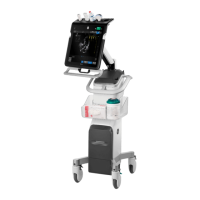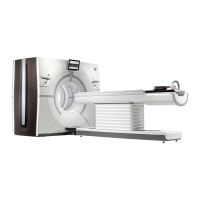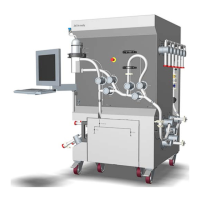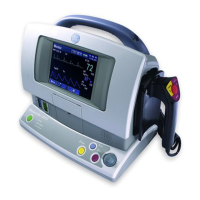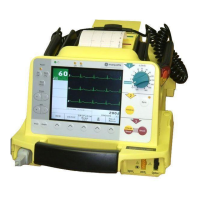RTfino/RT3200 Advantage–II/RT–x200 SERVICE MANUALGE MEDICAL SYSTEMS
P9030GX
THEORY
5–5
REV 0
LIVER
MASS
TRANSDUCER
TRANSDUCER
LIVER
MASS
A–MODE
(AMPLITUDE)
B–MODE
DEPTH
5–1a
B–SCAN
M–MODE
5–1b 5–1c
B/M MODE
B
ULTRASOUND DISPLAY
ILLUSTRATION 5–1
Since a narrow beam is necessary to resolve small anatomical detail, it would be ideal to produce an ultrasound beam
with a narrow focal zone extending along the beam’s entire length. Unfortunately, this is not possible. Therefore, it is
necessary to optimize ultrasound imaging by providing a variety of transducers, each designed to sharply image
different body depths.
5–2–5 Echo Signal Processing
The received echo signal varies in amplitude and frequency as well as in return time. Not only is this caused by the
acoustic impedance of the body material causing the echo, it is also due to the normal attenuation rate of the
ultrasound signal as it travels through the body.

